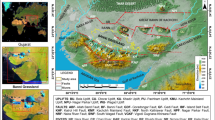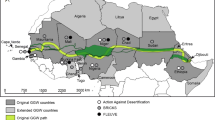Abstract
Today, Japan strives to preserve some of its rural Satoyama landscapes in a sustainable way in order to ensure the survival of some well-functioning rural ecosystems in the face of continuing urbanization on the one hand and the neglect of such landscapes on the other. In the Lake Biwa watershed area in Shiga Prefecture, Satoyama landscapes comprise woodlands, grasslands, dry and wet fields, residential areas, and the lakeshore. The area today faces two major challenges: first, how to use local natural resources in a sustainable way to avoid further neglect or destruction of Satoyama landscapes; and second, how to reorganize the management of Satoyama forest and lakeshore resources. The results of our investigation showed how solutions to the above issues were found in the context of lakeshore projects aimed at restoring reed (Phragmites communis) communities, which are important component of the Lake Biwa Satoyama landscape. Since 2002, four such projects have been successfully undertaken through the efficient use of local forest resources, mainly wood and bamboo, in wave dissipation structures and jetties which facilitate the expansion of reed communities. Management was reorganized and now consists of stakeholders which include the original Satoyama management communities, governmental bodies, resident and nonresident citizens, and nongovernmental and nonprofit organizations. The projects are a unique attempt to revive Satoyama watershed landscapes, and may serve as models in other watershed areas.






Similar content being viewed by others
References
Environmental Policy Division, Department of Lake Biwa and the Environment, Shiga Prefecture (2002) The environment of Shiga: a guide to omi’s environment (in Japanese). Shiga Prefectural Government, Otsu
Environmental Policy Division, Department of Lake Biwa and the Environment, Shiga Prefecture (2003) Annual report on the environment 2003 (in Japanese). Shiga Prefectural Government, Otsu
Fukamachi K, Oku H, Nakashizuka T (2001) The change of a Satoyama landscape and its causality in Kamiseya, Kyoto Prefecture, Japan between 1970 and 1995. Landsc Ecol 16:703–717
Horiuchi M, Fukamachi K, Oku H, Morimoto Y (2004) The management and spatial structure of Satoyama landscapes in two local communities around 1930 in Shiga Town, Shiga Prefecture (in Japanese with English abstract). J Jpn Inst Landsc Archit 67(5):673–678
Horiuchi M, Fukamachi K, Oku H, Morimoto Y (2006) Patterns in the use of forest resources in Satoyama landscape in the western part of Shiga Prefecture based on two diaries of the late Meiji period (in Japanese with English abstract). J Jpn Inst Landsc Archit 69(5):705–710
Murota T, Mitumata G (2004) Iriai forests and commons (in Japanese). Nipponhyoron-sha, Tokyo
Nishihiro J, Nishihirio M, Washitani I (2006) Restoration of wetland vegetation using soil seed banks: lessons from a project in Lake Kasumigaura, Japan. Landsc Ecol Eng 2:171–176
Nishikawa Y (2002) The cultural history of reed (in Japanese). Sunrise, Hikone
Ostendorp W, Iseli C, Krauss M, Krumscheid-Plankert P, Moret J-L, Rollier M, Schanz F (1995) Lake shore deterioration, reed management and bank restoration in some Central European lakes. Ecol Eng 5:51–75
Shiga Prefecture (1920–2000) The statistical books of Shiga Prefecture (in Japanese). Shiga Prefectural Government, Otsu
Shiga Prefecture (1928) The history of Shiga Prefecture, vol 4. Modern times (in Japanese). Shiga Prefectural Government, Otsu
Takeuchi K, Brown RD, Washitani I, Tsunekawa A, Yokohari M (2003) Satoyama: the traditional rural landscape of Japan. Springer, Tokyo
Valkama E, Lyytinen S, Koricheva J (2008) The impact of reed management on wildlife: a meta-analytical review of European studies. Biol Conserv 141:364–374
Washitani I (2003) Restoration of aquatic ecosystems. In: Takeuchi K et al (eds) Satoyama: the traditional rural landscape of Japan. Springer, Tokyo, pp 143–147
Acknowledgments
We would like to thank Ms. Beatrix Yoshikawa for her help with the English manuscript.
Author information
Authors and Affiliations
Corresponding author
Rights and permissions
About this article
Cite this article
Horiuchi, M., Fukamachi, K. & Oku, H. Reed community restoration projects with citizen participation: an example of the practical use of Satoyama landscape resources in Shiga Prefecture, Japan. Landscape Ecol Eng 7, 217–222 (2011). https://doi.org/10.1007/s11355-010-0129-9
Received:
Revised:
Accepted:
Published:
Issue Date:
DOI: https://doi.org/10.1007/s11355-010-0129-9




